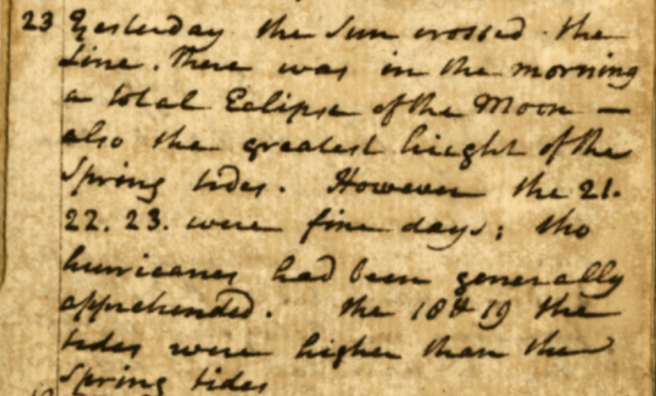Voted the Best Place to See by Condé Nast Traveler.


This summer one of Charleston’s moments in the spotlight is actually due to its moment in the dark – a solar eclipse takes place August 21, and Charleston is the last major city in North America that will experience mid-day darkness.
Over the years, the Drayton family experienced their own share of astronomical events. Thanks to well-preserved items in our collection, like Charles Drayton’s detailed and almost daily diary entries, we have insight into the family’s experience on the estate during notable times in history.
Charles’ diary entries include accounting and agricultural notes, as well as brief mentions of global events. One such entry recounts the lunar eclipse in September 1801, visible throughout North and South America:
Sept 23, 1801
Yesterday the Sun crossed the Line. There was in the morning a total Eclipse of the Moon – also the greatest height of the Spring tides. However the 21. 22. 23. were fine days: tho hurricanes had been generally apprehended. the 18 & 19 the tides were higher than the Spring tides.
Charles, his family, and others who watched the sky that night would have seen the moon gradually covered in shadow, before glowing a deep coppery red at the peak of the eclipse. His notes on the high tides reflect the alignment of the sun, earth and moon, creating additional gravitational force that would have increased tide height.
Charles’ diary is being digitized and transcribed by the College of Charleston’s Lowcountry Digital Library.
A note on 2017’s solar eclipse: We’ll be closing Drayton Hall at noon on August 21 for our guests’ safety and convenience.